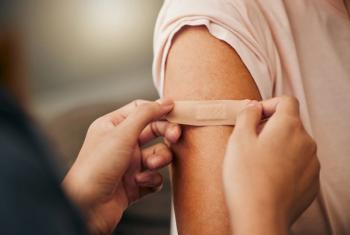
A boy with clothing sensitivity and other sensory problems
Q. A 4?-year-old boy in my practice has an array of complaints—clothing sensitivities, eye itching, food aversion, and tics, to name a few. The tics began at age 3 with eye blinking, which subsided after six months, followed by snorting, which lasted three months. His tics are now at their worst.
Q. A 4½-year-old boy in my practice has an array of complaints-clothing sensitivities, eye itching, food aversion, and tics, to name a few. The tics began at age 3 with eye blinking, which subsided after six months, followed by snorting, which lasted three months. His tics are now at their worst.
The family has seen a neurologist, who said the boy's behavior could be the result of Tourette syndrome (but that it is too early to tell) or pediatric autoimmune neuropsychiatric disorder associated with streptococcal infections (PANDAS). The boy started sensory integration therapy, which seemed to help the tactile problems initially. Now, however, those problems are increasing. Some days it takes him 45 minutes to get his socks on, and he will scream for 30 minutes that his eyes are itching and bothering him. The parents-who are looking for ways to stop the sensory issues more than the tics-are hesitant to start their child on medication because of his age. What help can I offer this family?
Melody Burton, DOMArlington, Tex.
"Children with tactile sensitivities tend to have increased difficulty when the seasons change (especially from fall to winter and winter to spring). I would begin treatment for this child by completing the pressure touch protocol developed by Patricia Wilbarger, OTR. This technique, utilized to decrease sensory defensiveness, is frequently referred to as the brushing program and involves application of deep pressure. I would also have the family complete deep pressure activities with the child before he dresses. (Most likely, the child registers light touch as painful, so putting his socks on actually hurts him.) These activities include arm and leg squeezes to increase his awareness of these body parts, deep pressure applied to the soles of the feet, jumping, and pushing feet against a wall.
"It's unclear why the boy's eyes are itching and bothersome, but I would try sunglasses or a hat-he may have light sensitivity. I would also try socks that don't have seams (these can be obtained from a company called SmartKnit). As much as possible, the child should be allowed to select what types of clothes he wants to wear. Because it sounds like he registers certain fabrics and touches as painful, putting him in charge should decrease some of these problems."
Because the tics appear to be transient in character, I would not make a diagnosis of Tourette syndrome at this time. In the absence of a history of group A β-hemolytic streptococcal tonsillopharyngitis or symptoms of obsessive compulsive disorder, I would not consider PANDAS.
In regard to the eye symptoms, one possible diagnosis is vernal conjunctivitis, an allergic disorder that occurs most often during spring and summer and is characterized by intense pruritus, photophobia, lacrimation, and a bluish-white appearance of the palpebral conjunctiva and plaques on the bulbar conjunctiva.
Morris Green, MD
DR. GREEN is Perry W. Lesh Professor of Pediatrics, Indiana University School of Medicine, Indianapolis, and a member of the Contemporary Pediatrics Editorial Board.
Newsletter
Access practical, evidence-based guidance to support better care for our youngest patients. Join our email list for the latest clinical updates.










